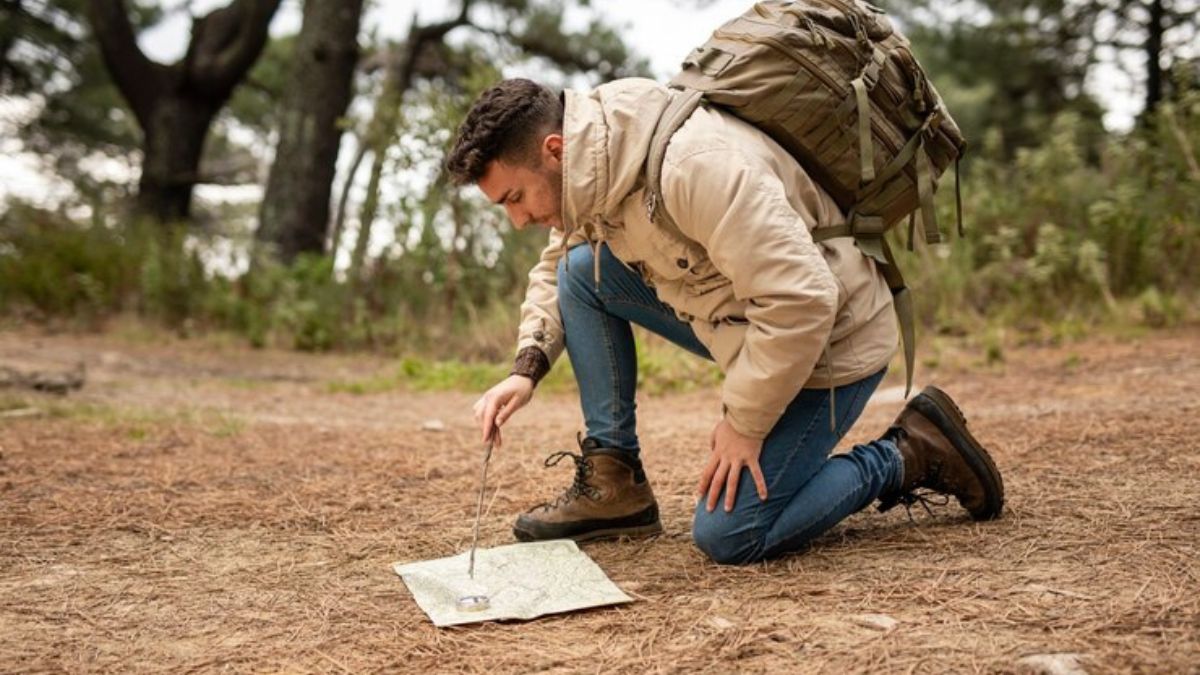NEWS
Exploring the Process of Revegetation: From Start to Finish

Revegetation is a critical environmental process aimed at restoring plant life to degraded or disrupted landscapes. Whether it’s restoring natural habitats, stabilizing soil, or combating erosion, revegetation helps bring ecological balance back to areas impacted by construction, mining, deforestation, or natural disasters. This process not only helps revive local ecosystems but also benefits the surrounding wildlife, contributing to a healthier, more sustainable environment. From choosing the right seeds to ongoing site management, the journey of revegetation is both scientific and strategic. Each step builds upon the last, making careful planning and execution essential for a successful outcome.

1. Selecting the Right Seeds and Planning the Project
The first step in a successful revegetation project involves selecting the appropriate seeds for the landscape and planning out every detail of the process. Different environments and ecosystems require specific plants to ensure the newly introduced vegetation can thrive. Using a specialized revegetation seed from a reliable source can help secure high-quality, native seeds that are well-suited for the particular project area. Seeds are chosen based on factors such as soil type, climate, water availability, and the natural ecosystem. Having the right seeds ensures that the vegetation is compatible with the local environment, reducing the need for intensive maintenance. Planning is also essential to define project goals, determine necessary resources, and identify potential challenges.
2. Preparing the Site for Revegetation
Site preparation is a crucial stage that sets the foundation for a successful revegetation project. This may involve removing invasive species, leveling the ground, or adding soil amendments to improve fertility and support plant growth. In some cases, preparing the site may include grading, tilling, or even reshaping the landscape to control erosion and optimize water retention. Proper site preparation not only promotes the survival of the seeds but also minimizes competition from weeds and other plants. It’s important to thoroughly assess the site to tailor preparation techniques to the unique needs of the landscape. This stage often requires coordination between environmental scientists, land managers, and field workers to ensure the area is ready to support new vegetation growth.
3. Soil Health and Erosion Control Measures
Soil health plays a vital role in the success of any revegetation project. Ensuring that the soil has adequate nutrients and a stable structure helps promote strong root growth and improves the overall survival rate of newly planted vegetation. To support soil health, soil tests may be conducted to assess nutrient levels, pH, and organic matter content, allowing for adjustments before seeding. Additionally, erosion control measures are often implemented, especially in areas with steep slopes or loose soil. Erosion blankets, silt fences, and mulch can help stabilize the soil, protecting both the land and the newly planted seeds. Proper soil management helps to create a strong base for sustainable plant growth in the long term. These measures prevent soil loss and increase the likelihood that seeds will establish roots successfully.
4. Seeding Techniques and Timing
The method of seeding and the timing of planting are both key factors in the revegetation process. Depending on the project, different seeding techniques such as broadcast seeding, hydroseeding, or drill seeding may be used. Timing is equally important, as planting during the right season ensures that seeds have the best chance to germinate and grow. For instance, spring and fall are typically favorable for many regions because of moderate temperatures and sufficient rainfall. By selecting the best seeding technique, land managers can improve the efficiency and effectiveness of seed dispersion. Seeding techniques are selected based on the site’s characteristics and project goals, providing the new plants with a favorable environment to take root and establish themselves in the landscape.
5. Watering and Irrigation Needs
Water is essential for germination and initial growth, so determining the right irrigation methods is an important step in revegetation. Natural rainfall may be sufficient in some areas, but arid or semi-arid regions may require additional irrigation support. In these cases, irrigation systems or temporary watering schedules may be implemented to ensure the seeds receive the moisture needed for successful establishment. Consistent monitoring of soil moisture can help in adjusting watering practices as plants become established. Monitoring the site’s water needs and adjusting irrigation as necessary helps maintain optimal growing conditions. Watering techniques are chosen based on environmental conditions and budget, balancing the need for hydration with responsible water use.
6. Monitoring Growth and Managing Vegetation
Once the seeds have been planted and initial growth begins, ongoing monitoring is crucial to assess the success of the revegetation efforts. Regular site visits help identify any emerging issues, such as pest infestations, invasive species, or signs of poor plant health. Monitoring the area also involves tracking plant growth rates and checking that the newly planted vegetation is spreading as planned. This ongoing assessment provides valuable data that can inform adjustments to the plan. Managing vegetation may include additional maintenance tasks like weeding, pest control, and adding mulch. Addressing these aspects promptly ensures that the new plants can continue to grow and develop without disruption, ultimately leading to a healthier ecosystem.
7. Long-Term Maintenance and Sustainability
Revegetation is not a one-time project but a long-term commitment to land restoration. After the initial stages of growth, regular maintenance may still be needed to ensure the vegetation’s sustainability. This can include follow-up plantings to fill any gaps, applying fertilizer if necessary, and continuing to control erosion. Long-term planning ensures that revegetation efforts remain beneficial over time, preventing the area from reverting to a degraded state. The ultimate goal of revegetation is to create a self-sustaining ecosystem that requires minimal human intervention over time. With careful monitoring and occasional maintenance, these revegetated sites can evolve into resilient landscapes that contribute positively to the environment and offer lasting ecological benefits.

Revegetation is a multi-stage process that requires careful planning, ongoing maintenance, and a strong commitment to restoring the natural landscape. By understanding each phase—from seed selection to long-term sustainability—land managers and environmentalists can effectively revive degraded areas, contributing to healthier ecosystems and reduced erosion. This approach not only benefits the environment but also enhances the resilience of the local ecosystem. Using high-quality seeds, preparing the soil, and implementing sustainable water practices all contribute to a successful project. Revegetation goes beyond aesthetics, playing a key role in conservation, biodiversity, and land rehabilitation. With thoughtful approaches, revegetation can transform damaged lands into thriving, self-sustaining ecosystems that benefit both nature and future generations.
NEWS
What You Need to Know About Bicycle Accidents Due to Faulty Spare Parts

Bicycle accidents caused by faulty spare parts are an overlooked yet serious issue that raises significant legal concerns.
Determining the liable party requires a careful examination of the laws surrounding personal injury law.
This article talks about the legal aspects of bicycle accidents caused by defective parts, helping you understand your rights, liabilities, and the steps to take.
The Role of Spare Parts in Bicycle Safety
Bicycles rely on precision-engineered components for safe operation. Parts like brakes, chains, pedals, wheels, and frames must meet rigorous quality standards. Even a minor defect in these components can result in loss of control, sudden stops, or catastrophic failures during a ride.
Such incidents not only put the cyclist at risk but may also endanger pedestrians and other road users. The best bicycle accident lawyers are often called upon to address these issues, ensuring that manufacturers, suppliers, and repair shops are held accountable for any defects that contribute to an accident.
As one of the leading personal injury law firms, Walner Law strives to help those who were injured due to the negligence or reckless acts of others. In addition to bicycle accidents, the firm also deals with car and truck accidents, medical malpractice cases, and workers’ compensation issues. Their consistent track record of winning high settlements makes them the ideal choice in a victim’s fight against insurance adjusters.
Common Types of Faulty Spare Parts
Several parts are more prone to defects, which can lead to accidents:
● Brakes
Faulty brake pads or mechanisms can fail to provide adequate stopping power, leading to collisions.
● Frames
Cracks or structural weaknesses in the frame may cause it to collapse under pressure.
● Wheels and Tires
Poorly manufactured wheels or defective tires can lead to blowouts or wobbling.
● Chains and Gears
Malfunctioning chains or misaligned gears can cause sudden slips, leading to loss of balance. These defects may stem from manufacturing errors, substandard materials, or improper repairs.
Legal Implications of Faulty Spare Parts
Cyclists injured due to defective spare parts can seek legal recourse under product liability laws. These laws hold manufacturers, distributors, and retailers responsible for ensuring the safety of their products. There are three basic grounds for product liability claims. They are mentioned below.
● Manufacturing Defects
Occurs when a product is improperly assembled or has a flaw that makes it unsafe.
● Design Defects
Involves inherent flaws in the product’s design, making it dangerous even if manufactured correctly.
● Failure to Warn
Occurs when producers fail to provide sufficient instructions or cautions regarding possible risks.
Proving Liability in a Bicycle Accident
Proof that the defect was the direct cause of the accident is necessary to establish liability in these situations. Essential elements consist of:
● Documentation
Keep records of purchase receipts, repair bills, and warranties.
● Expert Testimony
Engineers or mechanics can assess whether the defect was the primary cause of the incident.
● Accident Report
Detailed accounts of the accident help establish the sequence of events. Cyclists may also need to show they were using the bicycle as intended and had yet to make unauthorized modifications that could have contributed to the failure.
Preventive Measures to Avoid Accidents
While legal remedies exist, prevention is always better than cure. Cyclists can take the following steps to minimize risks:
· Inspect bicycles regularly for signs of wear or damage
· Replace worn-out components with certified spare parts
· Avoid purchasing counterfeit or low-quality parts
· Reputable professionals perform repairs and maintenance
Conclusion
Bicycle accidents caused by faulty spare parts highlight the critical importance of quality control and accountability. Knowing your rights under product liability laws can empower you to seek justice if you are injured due to defective components.
Cyclists who are careful about maintenance and part quality can lower risks and ride more confidently.
NEWS
Some Common Causes of Motorcycle Accidents and How to Avoid Them

Riding a motorcycle is thrilling. The open road, the wind on your face, and the freedom of movement make it an exciting experience. But riding comes with risks. Motorcyclists are more vulnerable than car drivers, and accidents can happen in a blink. The good news? Many accidents are avoidable if you know what to look out for.
Let’s explore some common causes of motorcycle accidents and how you can steer clear of them. Consulting motorcycle accident attorneys will help you get a deeper understanding.
Going further:
Left-Turning Vehicles
One of the most common causes of motorcycle accidents happens when a car turns left in front of a motorcycle. This usually happens at intersections. The driver either doesn’t see the motorcycle or misjudges its speed.
How to Avoid It:
Stay extra alert at intersections. Slow down and scan for cars preparing to turn. Always keep your headlights on, even during the day, and wear bright or reflective gear. The goal is to make yourself as visible as possible. If you sense a car might turn, be ready to brake or change your path.
Lane Splitting
Lane splitting is when you ride between lanes of slow or stopped traffic. While it might save time, it’s risky. The small space leaves no room for error, and drivers may not expect you to be there.
How to Avoid It:
Avoid lane splitting unless it’s legal in your area and the traffic conditions are safe. If you do it, ride slowly and steadily and keep enough space between you and the cars. Remember, safety is more important than speed.
Speeding and Losing Control
Speed is exciting, but it’s also dangerous. Riding too fast gives you less time to react to road hazards, other vehicles, or sudden changes. At high speeds, even small mistakes can lead to big accidents.
How to Avoid It:
Stick to the speed limit. Adjust your speed to the road conditions. Wet roads, curves, and traffic require slower, more careful riding. If you’re new to riding, consider taking a motorcycle safety course to build confidence in controlling your bike.
Road Hazards and Poor Conditions
Motorcycles don’t handle road hazards as well as cars. Gravel, potholes, wet roads, and debris can cause you to lose balance and crash.
How to Avoid It:
Always scan the road ahead for hazards. Slow down when riding on unfamiliar or rough roads. Avoid sudden swerves or braking—smooth movements are key. Use tires made for the kind of riding you do, and make sure they’re in good condition.
Distracted or Impaired Drivers
Distracted driving is everywhere. Many car drivers look at their phones, eat, or talk while driving. Some even drive under the influence of alcohol or drugs, which makes spotting motorcyclists even harder.
How to Avoid It:
Keep your distance from cars that move erratically, slow down suddenly, or seem out of control. Be especially careful at night or on weekends when impaired driving is more common. Ride defensively—always assume that other drivers may not see you.
Riding in Blind Spots
Motorcycles are smaller than cars and can disappear in a vehicle’s blind spots. If a driver doesn’t check their mirrors properly, they could move into your lane without warning.
How to Avoid It:
Stay out of blind spots whenever possible. Avoid riding directly alongside cars for too long. A good rule of thumb: if you can’t see the driver’s face in their mirrors, they can’t see you. Position yourself where you’re visible, and be cautious when passing vehicles.
Inexperienced Riders
Riding a motorcycle takes skill and practice. New riders often struggle with balance, turning, and braking. Inexperience can lead to poor decisions, especially in tricky situations.
How to Avoid It:
Start with a smaller, less powerful bike until you build your skills. Take a certified motorcycle safety course. Practice riding in safe areas, like empty parking lots, to improve your handling, turning, and braking. The more confident you are, the safer you’ll be on the road.
Safety Measures to Keep in Mind
No matter how careful you are, accidents can still happen. That’s why it’s important to follow some basic safety rules every time you ride:
- Wear the right gear: A DOT-approved helmet can save your life. Jackets, gloves, and boots protect you from injuries.
- Check your motorcycle: Ensure the brakes, tires, and lights work before hitting the road.
- Stay visible: Use your headlights, wear bright clothing, and avoid riding in blind spots.
- Ride defensively: Always assume other drivers don’t see you, and be prepared to react.
- Avoid bad weather: Rain, ice, and strong winds make riding more dangerous.
The Wrap-Up!
Preventable mistakes by the rider or other drivers often cause motorcycle accidents. You can reduce your risk and enjoy the ride by staying alert, riding defensively, and practicing good safety habits. Remember, your safety always comes first.
NEWS
Monetizing Live Football Content: Strategies for Tech Companies

Football, the world’s most popular sport, attracts billions of fans globally. With millions tuning in for live matches, the demand for live football content offers a lucrative opportunity for tech companies.
Whether it’s streaming platforms, data analytics firms, or social media giants, tech companies can tap into this fervor to drive revenue.
This article explores various monetization strategies that tech companies can adopt to maximize profits while delivering a superior fan experience.
Understanding the Live Football Market
Live football content is a broad spectrum that includes live streaming, real-time statistics, highlights, and interactive features.
Fans crave instant updates and seamless viewing experiences, which opens multiple revenue streams for tech companies.
However, competition is stiff, with traditional broadcasters, streaming services, and emerging tech players vying for dominance.
To thrive, tech companies must innovate and align their strategies with evolving consumer preferences.
Subscription Models for Exclusive Access
Premium Subscription Services
One of the most reliable ways to monetize live football content is through subscription models.
Offering premium access to live matches, exclusive interviews, and high-quality streams can entice fans to pay a recurring fee.
Key Benefits:
- Steady Revenue Stream: Recurring subscriptions ensure a predictable income, allowing better resource allocation for tech upgrades and content production.
- Enhanced Fan Loyalty: Exclusive content keeps fans engaged and fosters long-term subscriptions.
Freemium Models
The freemium model combines free and premium content.
Users can access basic live streams and highlights for free, but must subscribe for advanced features like ad-free streaming, multiple camera angles, or in-depth analytics.
Advantages:
- Broader Reach: Free content attracts a wide audience, increasing brand visibility and creating opportunities to upsell premium services.
- Higher Conversion Potential: Offering valuable free content can encourage users to upgrade to paid plans over time.
Targeted Advertising and Sponsorships
Dynamic Ad Placements
Advertising is a tried-and-tested method to monetize live football content.
Dynamic ad placements allow tech platforms to display targeted ads during live streams, ensuring that fans see relevant advertisements based on their preferences and behaviors.
Effective Strategies:
- Real-Time Ads: Show ads at optimal moments, like halftime or during match pauses, to avoid disrupting the viewing experience.
- Interactive Ads: Incorporate clickable banners or polls to engage users and boost ad interaction rates.
Sponsorship Opportunities
Sponsorships offer another lucrative avenue. By partnering with brands, tech companies can promote sponsored content during live matches.
This could include pre-match analyses, halftime shows, or post-match discussions featuring brand integrations.
Benefits:
- Increased Revenue Diversification: Sponsorship deals provide a secondary income stream, reducing reliance on one monetization method.
- Brand Association: Aligning with prominent football events enhances credibility and expands reach.
Pay-Per-View (PPV) for High-Value Matches
Some football matches, like finals or derbies, command exceptional fan interest. Tech companies can capitalize on this by offering a pay-per-view (PPV) option.
Fans who don’t want to commit to a subscription can pay a one-time fee to access specific games.
Benefits of PPV:
- Maximized Revenue for Key Events: High-stakes games often attract more viewers willing to pay for a single viewing experience.
- Flexible Fan Engagement: PPV caters to casual fans who only watch high-profile matches.
Leveraging Data Monetization
Selling Fan Insights
Data collected from users—such as viewing habits, favorite teams, and interaction patterns—can be monetized by selling insights to clubs, advertisers, and other stakeholders.
This data helps refine marketing strategies and improve fan engagement.
For instance, websites like https://www.thsport.live/sport-news/footballthai/ use advanced analytics to deliver personalized content, ensuring fans get updates relevant to their interests.
Why It Works:
- Personalization Drives Engagement: Tailored content keeps fans coming back for more.
- Valuable Market Insights: Clubs and brands can better target their campaigns with data-backed strategies.
Enhancing User Experience with AI
Artificial intelligence can be used to recommend personalized content, such as upcoming matches or highlight reels based on past viewing history.
This not only improves user satisfaction but also increases the time spent on the platform, opening more ad placement opportunities.
Partnerships with Football Clubs and Leagues
Collaborating with clubs and leagues can unlock unique content opportunities. For example, online websites might gain exclusive rights to behind-the-scenes footage, player interviews, or live training sessions. These partnerships can help tech companies stand out in a competitive market.
Online websites like https://www.thsport.live/sport-news/football/ have leveraged such collaborations to deliver high-quality, exclusive content, strengthening their position as go-to sources for football news and updates.
Advantages:
- Exclusive Content Attracts Subscribers: Fans are more likely to subscribe for access to content they can’t find elsewhere.
- Enhanced Credibility: Partnering with reputable clubs and leagues boosts website credibility and fan trust.
Fan Engagement Tools: Virtual Reality and Gamification
Virtual Reality Experiences
Virtual reality (VR) offers fans an immersive experience, bringing them closer to the action.
From virtual stadium tours to 360-degree live match views, VR technology creates new avenues for fan engagement.
Impact on Monetization:
- Unique Selling Proposition: VR differentiates platforms from competitors.
- Premium Pricing: Fans may pay extra for a fully immersive experience.
Gamified Engagement
Adding gamified elements like fantasy leagues, prediction games, or interactive quizzes can boost fan interaction.
These tools not only enhance user experience but also open opportunities for in-app purchases or ad placements.
Why It Works:
- Increased User Retention: Gamification encourages fans to spend more time on the platform.
- Additional Revenue Streams: Monetize through entry fees for games or exclusive rewards.
Case Studies: Success Stories in Football Monetization
Manchester City’s Tech Partnerships
Manchester City has embraced tech innovations by partnering with platforms that offer interactive fan experiences.
Their use of real-time data, VR, and exclusive digital content has set a benchmark for how clubs can collaborate with tech companies to boost fan engagement and revenue.
Localized Content Websites
Regional websites likehttps://www.thsport.live/sport-news/football/ have successfully monetized live football content by catering to specific audiences.
These wibsites provide tailored updates, interactive features, and exclusive insights, ensuring fans remain engaged and loyal.
Conclusion
Monetizing live football content offers immense potential for tech companies, provided they adopt the right strategies.
From subscription models and targeted ads to innovative technologies like VR and AI, the avenues for revenue generation are vast.
The key lies in delivering value—through exclusive content, personalized experiences, and seamless access to live matches.
As the digital landscape evolves, tech companies must remain agile, embracing new technologies and forging partnerships to stay competitive.
By focusing on fan-centric strategies, they can not only maximize profits but also build a loyal, engaged audience that keeps coming back for more.

 Cartoon1 year ago
Cartoon1 year agoUnlocking the Potential of Nekopoi.care: A Comprehensive Guide

 Game1 year ago
Game1 year agoExploring Aopickleballthietke.com: Your Ultimate Pickleball Destination

 BUSINESS1 year ago
BUSINESS1 year agoWhat Companies Are In The Consumer Services Field

 HOME IMPROVEMENT1 year ago
HOME IMPROVEMENT1 year agoVtrahe vs. Other Platforms: Which One Reigns Supreme?

 BUSINESS11 months ago
BUSINESS11 months agoUnraveling the Mystery of 405 Howard Street San Francisco charge on Credit Card

 TECHNOLOGY11 months ago
TECHNOLOGY11 months agoThe Guide to Using Anon Vault for Secure Data Storage

 ENTERTAINMENT8 months ago
ENTERTAINMENT8 months agoUnderstanding Bunkr Album: A Comprehensive Guide

 ENTERTAINMENT1 year ago
ENTERTAINMENT1 year agoThe Epic Return: Revenge of the Iron-Blooded Sword Hound
















